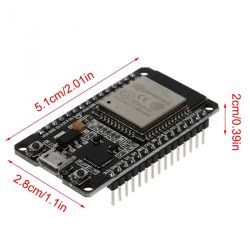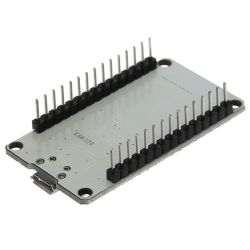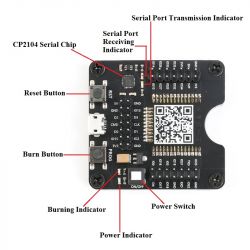Hi.
I have started exploring ESP-WROOM-32 using the original IDF version of Stable: https://docs.espressif.com/projects/esp-idf/en/stable/index.html
The version I have:
 .
.
Based on the original esp_http_client examples: https://docs.espressif.com/projects/esp-idf/e.../api-reference/protocols/esp_http_client.html.
I have prepared two modules.
Both modules make an http request to the server at cba.pl sending data received by the PHP script and loaded into the database:
- module A - every 10 seconds
- module B - every 15 minutes
Module A works very unstably by resetting itself several times a day (sometimes every 2 minutes, and sometimes it works for many hours without resetting). Sometimes it can also hang up completely - the reset button helps. I suspect that it may not be able to keep up with requests in particular when the cba.pl server is holding it down.
Module B is working much more stably, but it has also reset a few times over a few days.
Both modules in the same version - new.
Both modules have a good power supply, plus module A has a 220uF LOW ESR capacitor soldered in.
I'll paste the program code tomorrow, as I don't have access to the computer I wrote it on. It is possible that I have written something incorrectly.
I have not specifically implemented the Watchdog yet.
My question is about your experiences with the stability of ESP32 operation under the original IDF? Do you have any problems?
I have started exploring ESP-WROOM-32 using the original IDF version of Stable: https://docs.espressif.com/projects/esp-idf/en/stable/index.html
The version I have:
 .
.
Based on the original esp_http_client examples: https://docs.espressif.com/projects/esp-idf/e.../api-reference/protocols/esp_http_client.html.
I have prepared two modules.
Both modules make an http request to the server at cba.pl sending data received by the PHP script and loaded into the database:
- module A - every 10 seconds
- module B - every 15 minutes
Module A works very unstably by resetting itself several times a day (sometimes every 2 minutes, and sometimes it works for many hours without resetting). Sometimes it can also hang up completely - the reset button helps. I suspect that it may not be able to keep up with requests in particular when the cba.pl server is holding it down.
Module B is working much more stably, but it has also reset a few times over a few days.
Both modules in the same version - new.
Both modules have a good power supply, plus module A has a 220uF LOW ESR capacitor soldered in.
I'll paste the program code tomorrow, as I don't have access to the computer I wrote it on. It is possible that I have written something incorrectly.
I have not specifically implemented the Watchdog yet.
My question is about your experiences with the stability of ESP32 operation under the original IDF? Do you have any problems?








